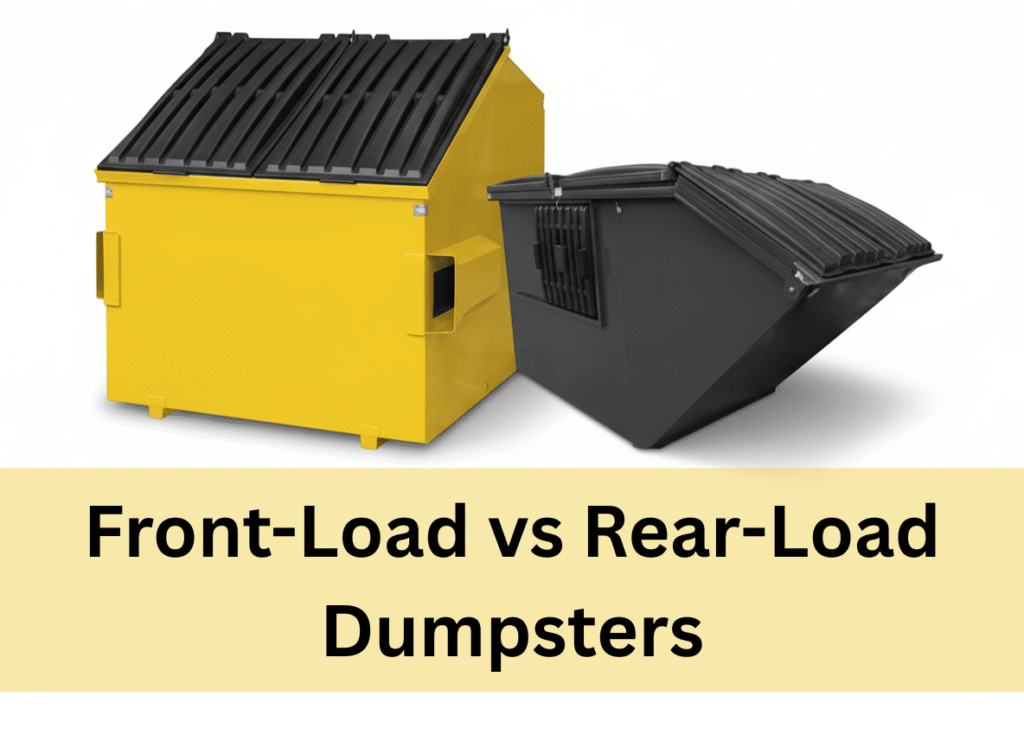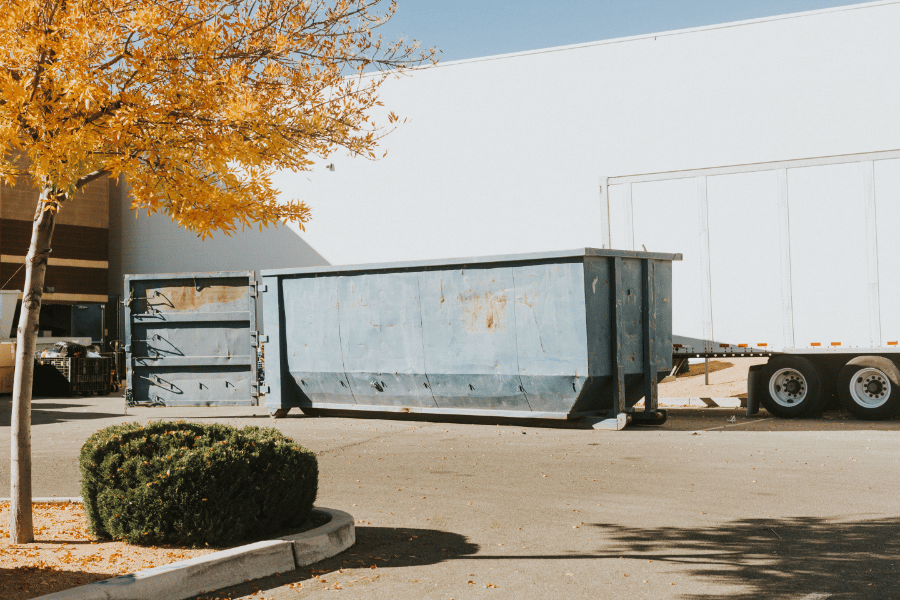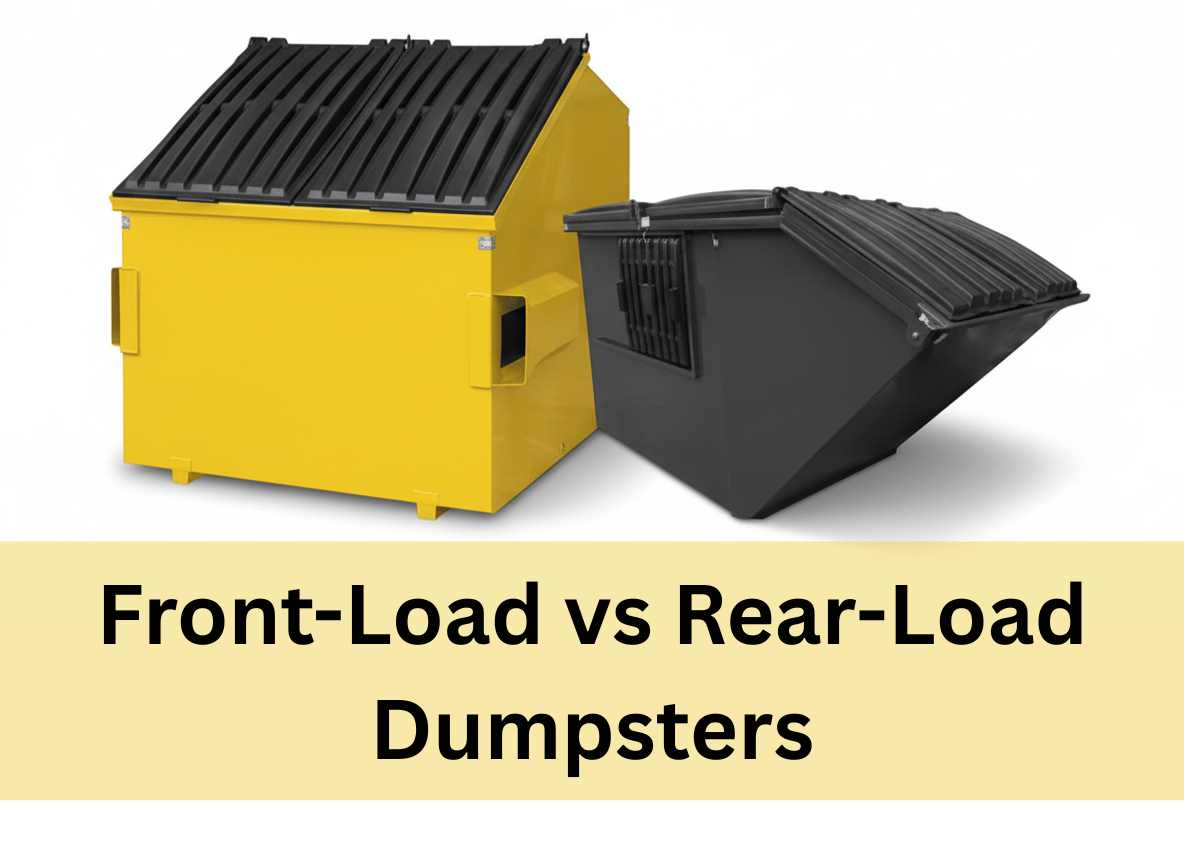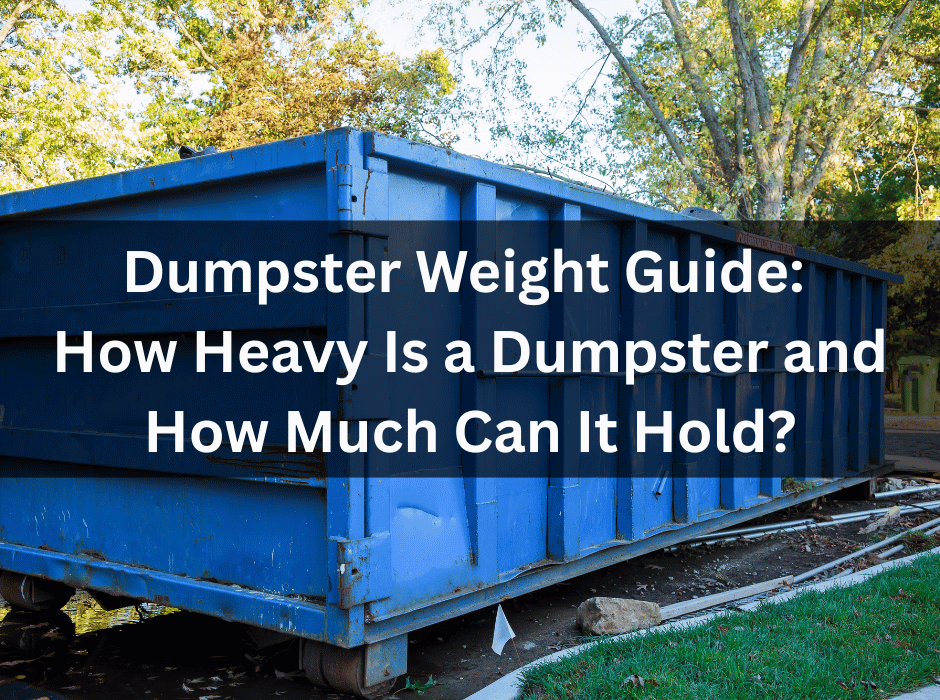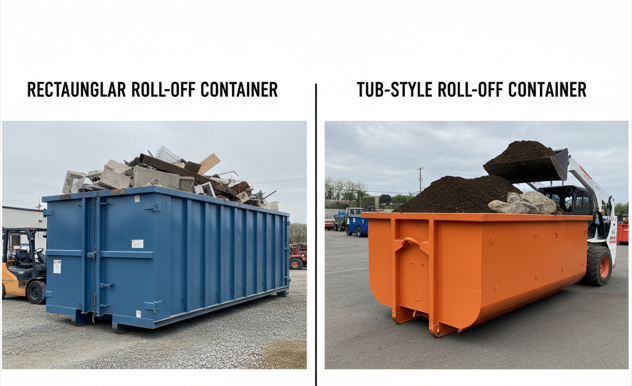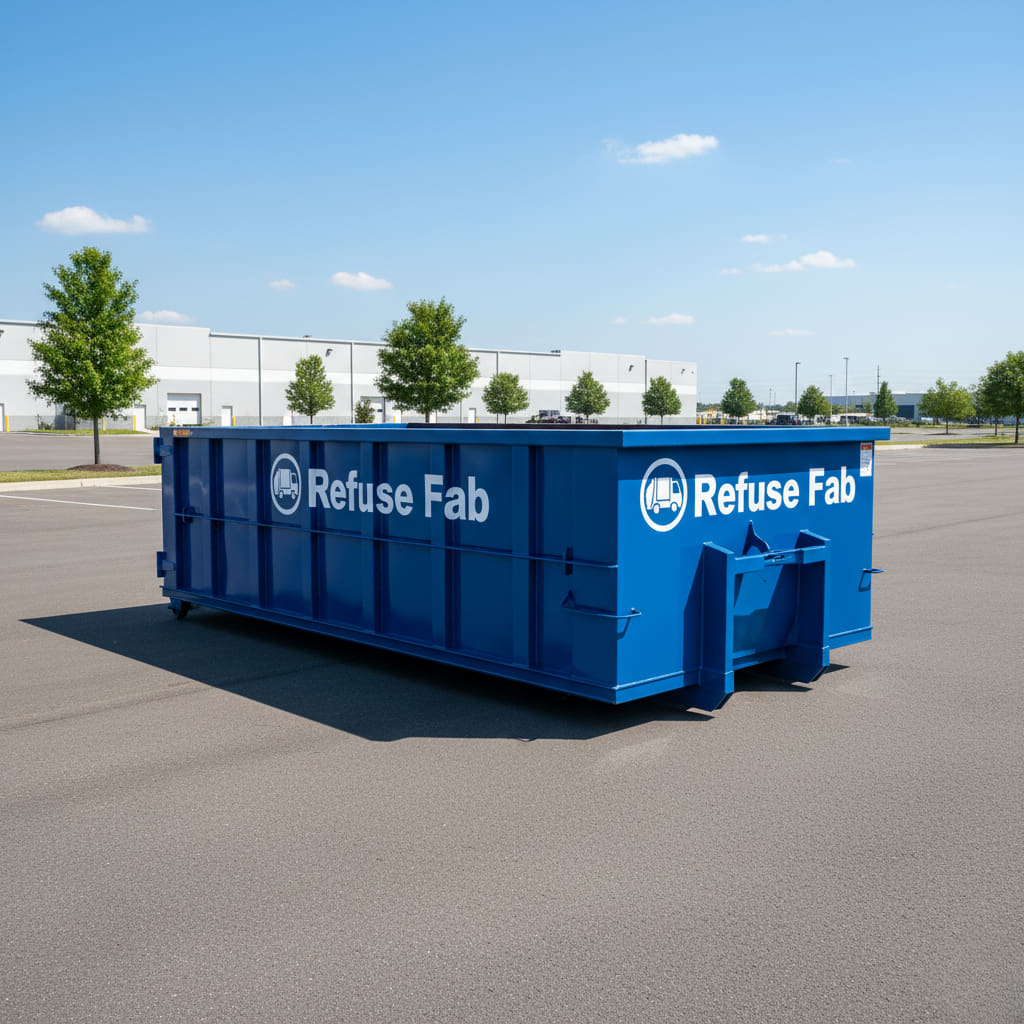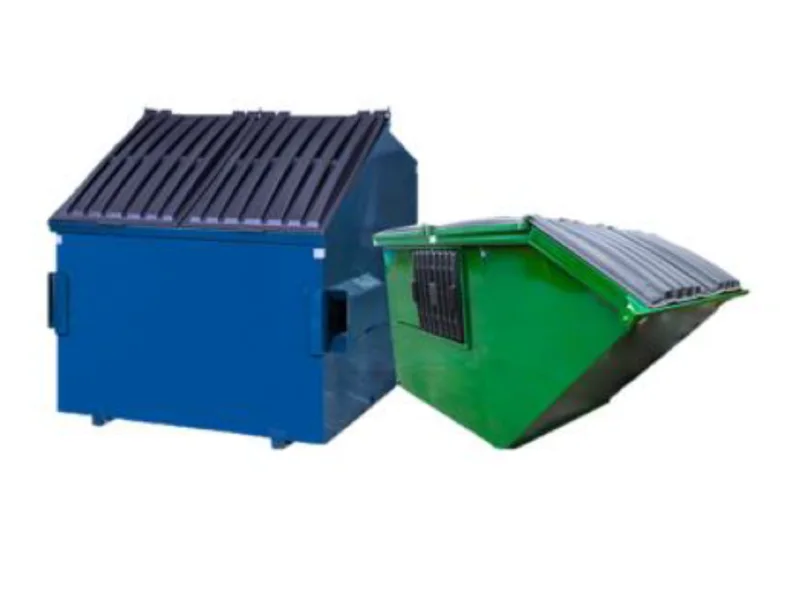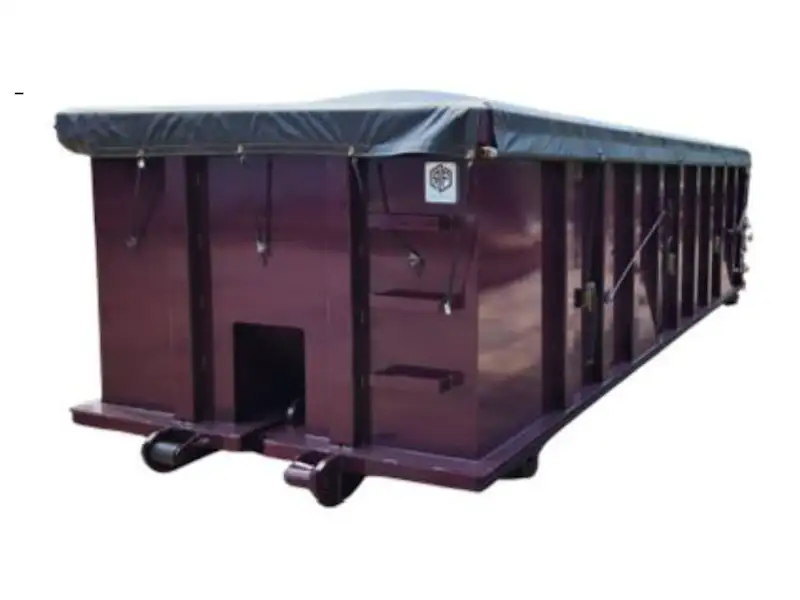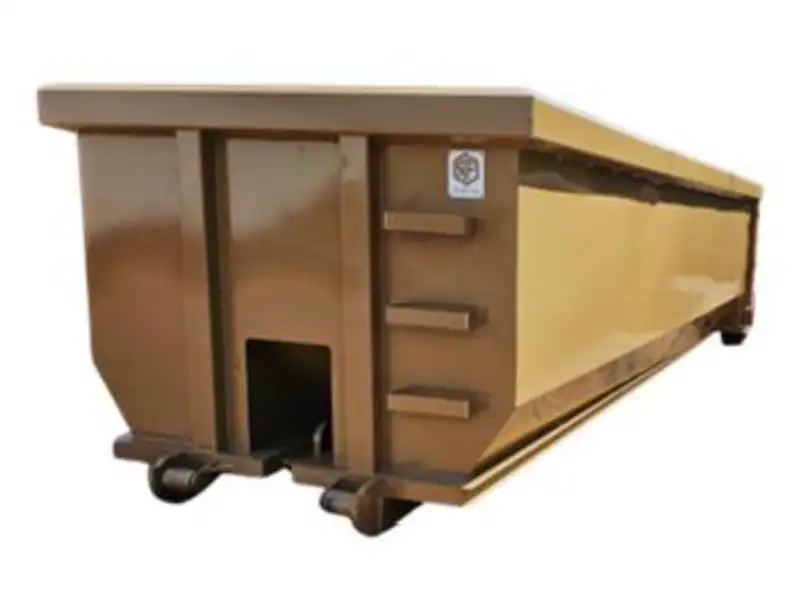In waste management, front-load and rear-load dumpsters are two common types of commercial bins, and they differ mainly in how trucks empty them. Front-load dumpsters (2–8 cubic yards) have pockets on their sides for a garbage truck’s hydraulic forks. The truck drives up, inserts forks, and lifts the bin over the cab to dump the trash out the top. In contrast, rear-load dumpsters also (roughly) 2–6 yards have a sloped back with a hinged door. A smaller rear-loader truck hooks the bin at the back and uses a chain/winch to lift and tip the waste out. In practice, front-load bins hold more waste and suit high-volume sites, while rear-load bins are more compact for tighter spaces. The paragraphs below explain these differences in detail and offer guidance on choosing the right container for your business.
Front-Load Containers
These bins have lids and fork-pockets on the front. A front-load truck inserts hydraulic arms into the bin’s side slots and hoists it up to empty the trash into the truck body. Front-load dumpsters tend to be larger – typically 2–8 cubic yards – and are built for heavy, regular waste streams. Because they sit behind stores or restaurants, they often have keyed lids to keep pests out. Front-load bins require clearance in front and above so the truck can lift them; they’re best used in open commercial settings. For example, grocery stores, office buildings, and apartment complexes commonly use front-load dumpsters for weekly pickup. They are very stable when full (less likely to tip) and help reduce the number of trips needed to haul away trash.
- How they work: Trucks lift from the front via built-in fork pockets on the sides. The entire bin is raised and inverted.
- Size & capacity: Usually 2–8 cubic yards (often 4, 6, or 8 yd). Front-load dumpsters generally have higher capacity for big waste volumes.
- Placement: Needs ample space in front and above. The truck backs up to it and requires clearance to operate.
- Best for: High-volume waste sites. Ideal for busy restaurants, retail centers, or large residential complexes that generate consistent trash. They handle big loads with fewer pickups.
- plexes that generate consistent trash. They handle big loads with fewer pickups.

Rear-Load Containers
These bins have a slanted rear and a swinging door. A rear-load truck hooks onto bars or slots on the back of the dumpster and pulls it up with a winch until the trash spills out. Because of this, rear-load bins are often narrower and lower (common sizes ~1.5–6 cubic yards) than front-load models. They usually have a flat or slightly angled lid. The compact, streamlined shape allows rear-load dumpsters to be placed against walls or in alleyways where space is tight. Smaller businesses, urban storefronts, and apartment buildings in dense areas often use rear-load bins. These dumpsters are more maneuverable and easier to empty in confined spots.
- How they work: Trucks lift from the rear. A chain or cable attaches to the back of the bin and hoists the container up and back, dumping out the contents.
- Size & capacity: Typically smaller (1–6 cubic yards). Rear-load dumpsters have less capacity than front-load models, making them better for moderate waste volumes.
- Placement: Takes up less footprint. Can be positioned in tight spaces (against a wall, in an alley, or small loading zone) because no large forklift needs to swing under it.
- Best for: Space-limited locations or smaller businesses. Useful for convenience stores, workshops, or offices with modest trash output. Also good for residential complexes in tight alleys. Their lower upfront cost and smaller size can make them more economical for low-to-medium waste loads.
Choosing the Right One
To decide between front and rear load dumpsters, consider your waste volume, pickup frequency, and space. If your business generates high volumes of trash on a regular schedule (like a supermarket or busy apartment complex), a front-load dumpster often makes sense – it holds more and needs fewer hauls. On the other hand, if you have a tight site layout or only moderate trash, a rear-load dumpster’s compact design can fit where front-loaders cannot. For example, a restaurant or school with limited back-alley space might use a rear-load bin, whereas a large shopping center with open loading docks would use front-load bins. In short, match the dumpster to your needs: high waste & open area = front-load; limited space & smaller loads = rear-load. Always check with your waste hauler or a container specialist about what trucks and dumpster sizes they support at your location.
Get a Custom Container: Both front-load and rear-load dumpsters can be built as heavy-duty roll-off style containers if needed. Refuse Fab fabricates custom front- and rear-loading roll-off bins to fit various applications. Our containers use rugged steel construction and can include features like lockable lids or chutes. Ready to upgrade your waste setup? Contact Refuse Fab for a free quote on a custom front- or rear-load container. Our team will help you choose the right dumpster type and size for your business needs.
FAQs
Can I place a front-load dumpster in a narrow alley?
No, front-load dumpsters require clearance in front and above for the truck’s forks to operate. For tighter spaces, a rear-load dumpster is a better fit.
Which type of dumpster is more cost-effective for small businesses?
Rear-load dumpsters tend to be more economical for small businesses due to their smaller size and lower upfront cost, making them ideal for locations with moderate waste volumes.
Are there limitations on what type of truck can empty a rear-load dumpster?
Yes, rear-load dumpsters are typically emptied by smaller trucks equipped with a winch system. They are more suitable for areas where large front-load trucks can’t access.
Can front-load dumpsters handle bulky or large items?
Yes, front-load dumpsters are ideal for larger, heavy waste loads. Their higher capacity makes them better suited for businesses with a lot of bulky or industrial-type waste.
How do I know if a rear-load dumpster is the right choice for my location?
If your business is located in an area with limited space, like an urban storefront or tight alley, a rear-load dumpster’s compact design is perfect for navigating smaller areas while still handling your waste needs.
